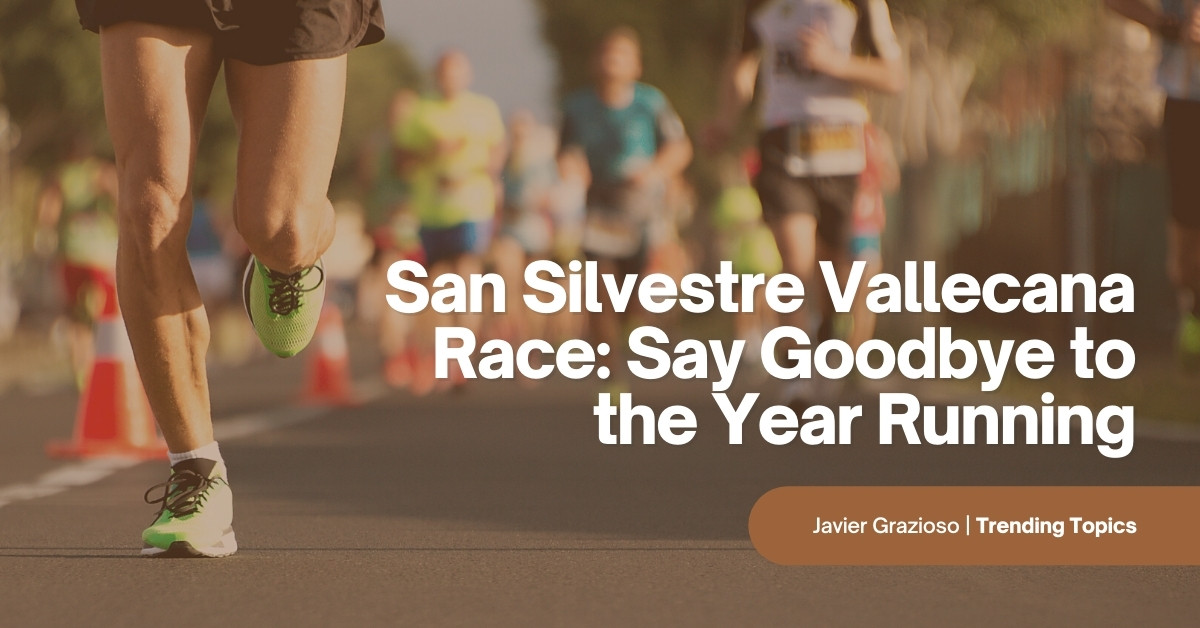
San Silvestre Vallecana Race: Say Goodbye to the Year Running
It reads on the San Silvestre Vallecana official website:
“Qué mejor manera de despedir el año que hacerlo de forma saludable: ¡corriendo la San Silvestre Vallecana!”
What better way to say goodbye to the year than to do it in a healthy way: running the San Silvestre Vallecana!
La San Silvestre Vallecana is “the most famous 10K in the world.” Its 6-mile course is run throughout Spain’s capital, Madrid, in Vallecas county. This is the most popular event of the year since it happens on New Year’s Eve.
If you’re eager to learn all about the origins and logistics of the most famous 10K race in the world, scroll down and join me as I explore all the details.
PRO TIP! Races throughout the world are organized into 5K, 10K, 15K, 20K, 25K, 30K, marathons (42K), and even 50K.
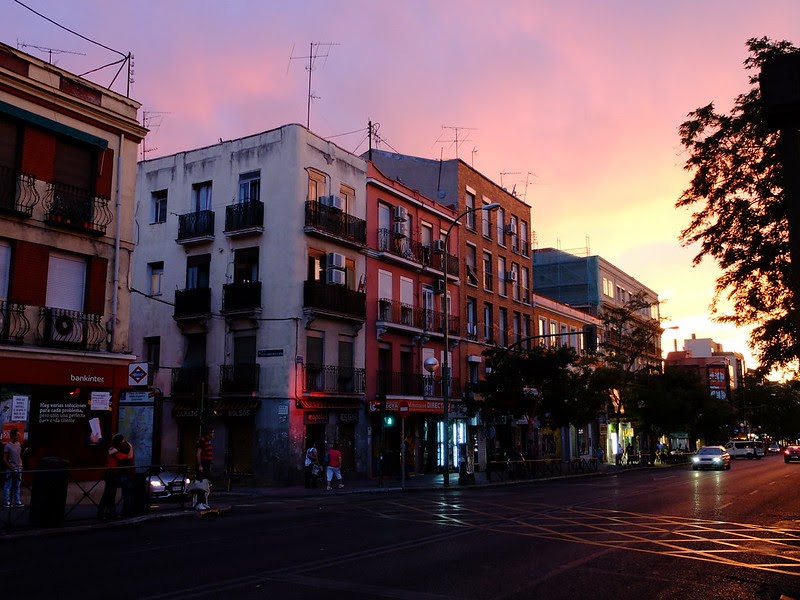
A Brief Look Into La San Silvestre Vallecana
In spite of La San Silvestre Vallecana not being the oldest race to happen on the last day of the year—that would be La San Silvestre de Galakao, which started in 1961 in the northern Spanish Basque Country (El País Vasco)—it is the most renowned.
La San Silvestre Vallecana is a 57-year-old road race. The Spanish athlete Antonio Sabugueiro came up with the name of Gran Premio de Vallecas (Vallecas Gran Prix or Grand Prize) given that Vallecas is a county within Madrid.
The first winner of the race was the Spaniard Jesús Hurtado, who ran against 56 other fellow athletes on the last day of 1964. Hurtado, however, ran a distance of only 2.7 km (1.67 miles).
Origins and a Journalist’s Mark
The Origins of La San Silvestre Vallecana are not Spanish, but rather, Brazilian. When a journalist, Casper Libero, created the race back in 1925, it received the name of La San Silvestre de Sao Paulo. This road race started on December 31st, 1925 at 11:40 p.m. in Sao Paulo, and finished in the first minutes of January 1st, 1926. This idea led Sabugueiro to turn the Brazilian race into a Spanish race.
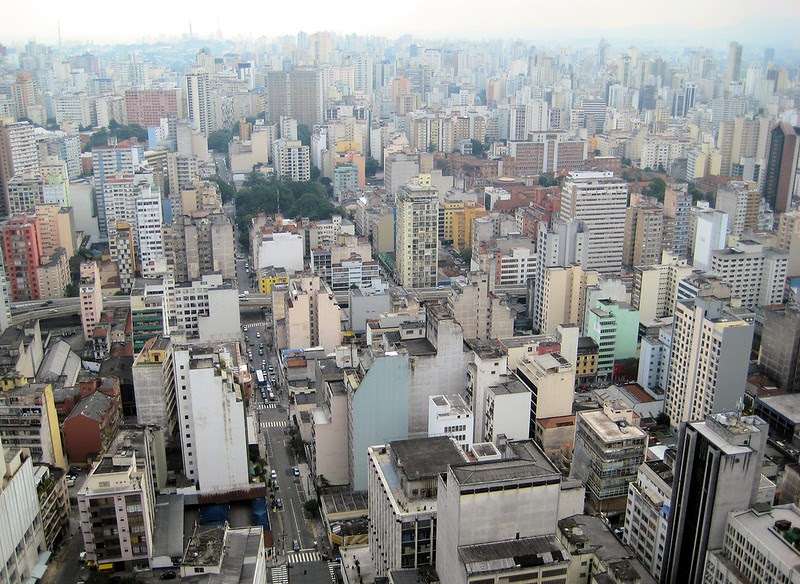
José Luis Gilabert, a journalist at the popular sports journal Marca, used the name of La San Silvestre Vallecana in one of his articles in 1965 to refer to the Brazilian race in Sao Paulo every year. Since that moment, El Gran Premio de Vallecas changed its name to La San Silvestre Vallecana.
In 1968, the Tunisian olympic champion, Mohammed Gammoudi became the first non-Spaniard to win the race, making the race a truly international event.
The economical crisis in Spain was so overwhelming the next year, that the San Silvestre Vallecana did not happen in 1969.
Popularity and International Reach of La San Silvestre Vallecana
Twelve years had passed and the very last day of 1981, La San Silvestre Vallecana saw its first badge of female runners. The Norwegian, Grete Waitz, turned into the first woman ever to run and win La San Silvestre Vallecana. Belgian runner Alex Halgesteen accompanied her in the male podium that day.
On its 35th edition, in 2000, La San Silvestre Vallecana had been popular for a while. This time, Nike started sponsoring the race, and the American company still sponsors the race up until this day.
2003 saw the last Spaniard (male) winner of San Silvestre Vallecana—his name, Chema Martínez. 2008 saw the last female Spaniard winner, Marta Dominguez.
2006 was special for two reasons. First, the Kenian runner Eliud Kipchoge crushed all the other previous results of San Silvestre Vallecana, running 10 kilometers (6 miles) in 26:54. This honor was double, because 2006 was the year that La San Silvestre Vallecana overcame La San Silvestre de Sao Paulo.
In 2011, La San Silvestre Vallecana hosted over 38,000 people, a vast number of people.
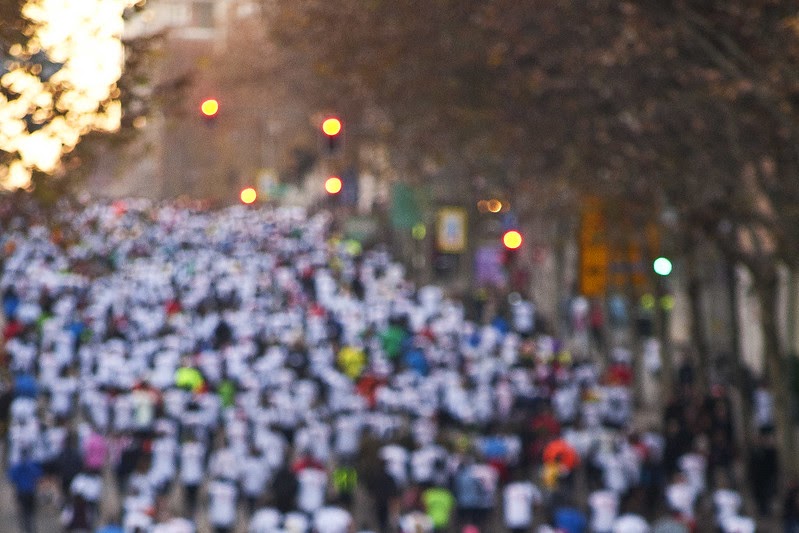
In 2018, two African athletes dominated the streets of Vallecas, crushing records once again. The 18-year-old Ugandan runner Jacob Kiplimo crossed the line in 26:39 beating every record in the world of every 10K race combined. His mark remains as the best in La Vallecana San Silvestre but not in the world anymore. The fastest time belongs to Joshua Cheptegei, who ran 10 kilometers in 26:11.
Kenian runner Brigid Kosgei crossed the line in 29:53 establishing a new record for the ladies.
In 2019 La San Silvestre Vallecana received the prestigious award of Gold Race Running Label from the International Association of Athletics Federation (IAAF), joining only three other 10K races in the world. The three others are: Ottawa 10K run in Canada, Birell Prague Grand Prix run in Czech Republic and Tata Consultancy Services World 10K Bangalore run in India.
La San Silvestre Vallecana and COVID
Last year, COVID forced the nearly 40,000 people, who normally run across the streets of Madrid, to stay home. This, however, doesn’t mean that La San Silvestre Vallecana became a virtual race. A select group of 250 men and 150 women (400 in total) ran the marathon and kept the tradition alive through the pandemic.
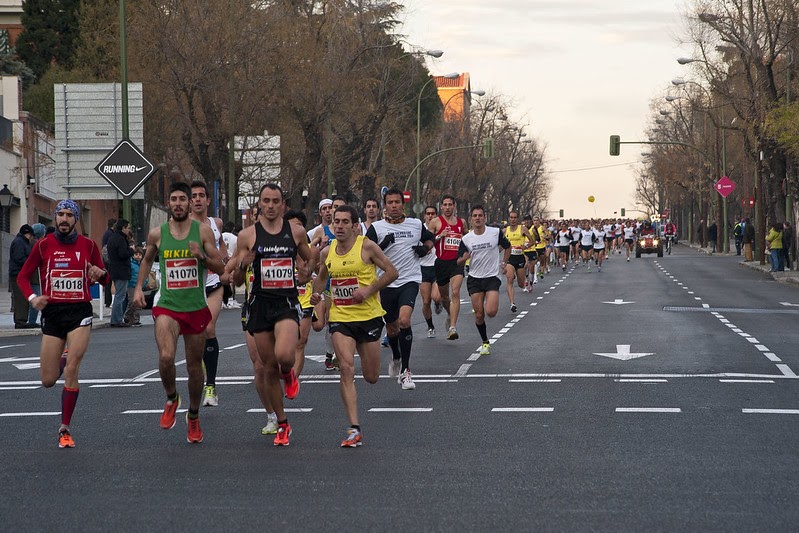
FUN FACT! The English gerund “running” and English noun “runner” have become very popular in Spanish speaking countries, substituting the original words atletismo and corredor(a). If you say: Soy runner (I’m a runner) to a Spanish speaking person, it is very likely that they will understand you perfectly!
La San Silvestre Vallecana in 2021
Spaniards and athletes all around the world are preparing to run across Madrid for the 56th time. However, according to San Silvestre Vallecana official webpage “it is still too early to set how (they’ll race) and how many (people will run), but in September we are going to answer every question that you have regarding the race.”
FUN FACT! The race in Spain, Sao Paulo and even other Latin American cities which have a less popular version of the race (including Guatemala) all have the name San Silvestre on it because December 31st is the day of Saint Sylvester, the 33rd Pope of the Catholic Church because he died on December 31st 335.
The English Speaking Winners of La San Silvestre Vallecana
11 English-speaking men and 3 English-speaking women have crowned themselves as champions throughout La San Silvestre Vallecana’s history. Interestingly enough, there are no Americans amongst them. Here are their names and the years in which they became champions.
| Competitor | Year(s) |
| Mike Tagg (UK) | 1970, 71 |
| Roger Clark (UK) | 1972 |
| Ian Stewart (UK) | 1974 |
| Jim Dingwall (UK) | 1976 |
| Alastair Hutton (UK) | 1977 |
| Nat Muir (UK) | 1978 |
| Steve Harris (UK) | 1982 |
| Dave Lewis (UK) | 1984, 85 |
| Gery Curtis (IRE) | 1988 |
| Jon Brown (UK) | 1999 |
| Craig Motram (AUS) | 2004 |
| Benita Johnson (AUS) | 2004 |
| Paula Radcliffe (UK) | 2005 |
| Gemma Steele (UK) | 2014 |
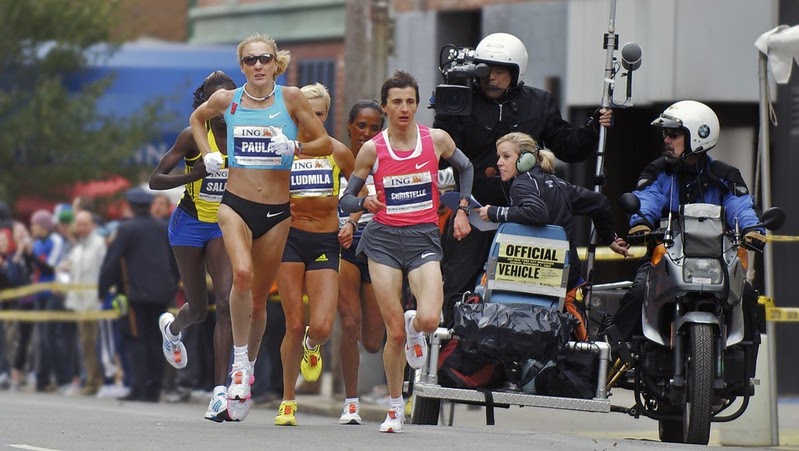
Craig Motram was the last non-African male to win the race. Since then, athletes from Kenya, Ethiopia, Eritrea and Uganda have dominated the last 16 years. It is worth mentioning, though, that in 2019 Bashir Abdi, a Belgian athlete with Somali origins conquered the race.
The same rule applies for the femenine branch, since Steele’s victory in 2014 Kenian and Ethiopian athletes have conquered la San Silvestre Vallecana.
Details of La San Silvestre Vallecana
Do those 26:39 and 29:53 times set by the African runners seem impossible to beat or more like a challenge to you? If you feel like you want to run La San Silvestre Vallecana throughout Madrid, you have the chance to choose from several categories in which professional runners and sport enthusiasts can participate.
While 2020 wasn’t a normal year for the race, and we still don’t have details on 2021’s edition, the details on the 55th (2019) edition can be very helpful to trace a mental map and guess how it’s going to be this year.
1. Prices
Back then, the inscriptions opened on September 16th and the price to sign up was 27 USD (23 euros), until October 1st, when it raised to 29 USD (25 euros) for sport enthusiasts. Pros had to wait until October 10th. Men needed 39 minutes or less in an equal race, while women needed 45 minutes, according to Runners World.
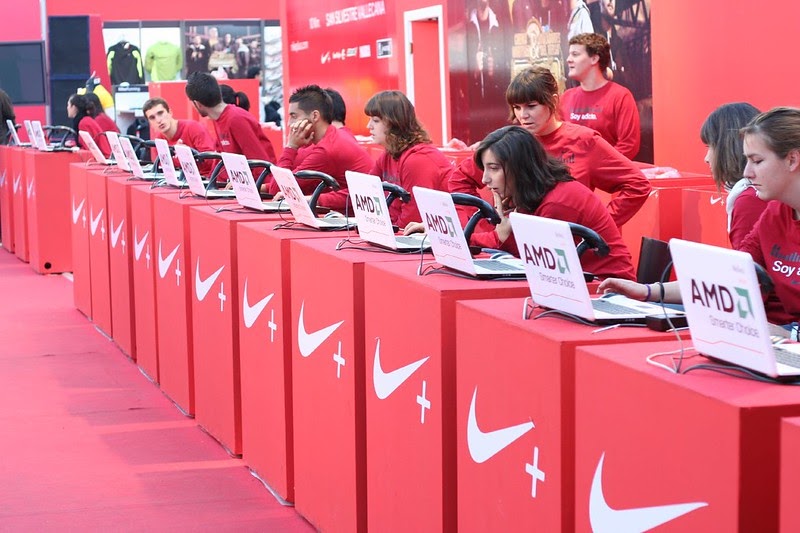
2. Schedules
The schedule (usually) is between 5pm and 12pm. The popular race starts at 5:30 pm and starts in Calle Concha Espina (literally Shell Thorn Street) and finishes around the Vallecas stadium (El Estadio de Vallecas), Rayo Vallecano’s stadium. As for the pros, they must wait until 8 pm to start running and they arrive at (and not around) the stadium.
3. Categories
There are different options according to your age and level. The popular race is for everyone who just wants to take part in it. Sign up, get a number, lace up your running shoes, run and have a lot of fun. The international elite race is for elite athletes and the San Silvestre Mini, some days before, is for people under 16..
International Elite Race
According to Es Madrid, In 2020, the race was different due to the pandemic. Every runner needed to undergo a COVID 19 test before the race. Elite men runners needed to have a mark under 34 minutes and women under 40.
Initially, men and women separated into groups, and then everyone separated into groups of six runners each in order to maintain social distancing
La San Silvestre Vallecana Mini
If you’re over 16 you can run as long as you have an authorization from your parents or tutor. If you’re under 16 the San Silvestre Mini is a race organized for kids and teenagers up to 15.
4. The Run Course – El recorrido
In 2020, the Elite runners ran 4 (2.5K per lap) laps around the Vallecas Stadium.
In 2018 runners ran the race starting from Concha Espina Avenue, next to Real Madrid’s Stadium (Santiago Bernabéu), going through Calle de Serrano to Plaza de República Argentina, passing through La Puerta de Alcalá, to Fuente de Cibeles, going to Plaza de Cánovas del Castillo for the first 5 kilometers of the race. Paseo el Prado takes them to Plaza Emperador Carlos V, from there they continue running down Ciudad de Barcelona avenue, to De la Albufera Avenue, Sierra del Cadí, Carlos Martínez Álvarez street, Martínez de la Riva street, De la Diligencia street, and finally arriving to the finish line in Candilejas.
The Elite race that year was very similar to the popular one. The most important difference was the finish line, which was at Vallecas Stadium. The Run Course was virtually the same with very minor changes.
5. Clothes and Weather in Madrid
Madrid is the capital of Spain, and the Iberic country enjoys mild weather. The maximum temperature in Madrid, Spain in December is around 53°F (12°C) 50°F (10°C). It rarely goes below 43°F (6°C) and above 60°F (16°C). While the minimum temperatures are between 35°F (2°C), and 34°F (1°C), they don’t tend to go below 23°F (-5°C) nor above 46°F (8°C), and it rarely snows.
Because of this, it is advisable to wear running clothes such as t-shirts, socks, shorts and running shoes. Nonetheless, taking a beanie, some thermal underwear, and gloves would be a great addition to avoid feeling chilly during the last night of the year, even if you’re running. If you’re feeling wild, however, the popular race accepts (and I might dare to say, embraces) people running in costumes.
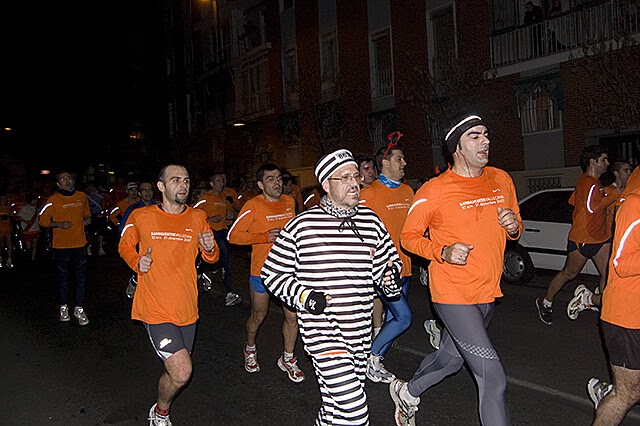
Learn Some Spanish Before the Year Ends!
Before you lace up your shoes, and go running through that door, try signing up for a free Spanish class!
If you’re thinking you still need to speak the country’s language even when your visit is for an international event, you are absolutely right! Besides the fact that Spanish will open a myriad of doors for you, it will make your visit to Madrid more enriching. Furthermore, whenever our trips involve our health and well-being it is a great idea to equip ourselves with the language before our travels. You’ll be able to feel much more free in the Spanish-speaking city, and you will be more relaxed during your run.

Want more Spanish resources? Check these out!
- Celebrating Culture and Joy: The Magic of Carnival in Spanish-Speaking Countries
- 15 Mouth-Watering National Dishes of Latin America
- Discovering The Mayan Languages
- The 10 Most Common Spanish Surnames in The U.S
- Everything About Mexican Christmas Traditions
- What Is the Hispanic Scholarship Fund? Is It Legit?
- A Spanish Guide to Thanksgiving Food Vocabulary
- How Did All Saints Day Celebrations Started?
- 9 Tips for Learning How to Learn Two or More Languages at Once - January 20, 2023
- The History and Tradition of Las Cabañuelas - December 26, 2022
- 10 Ways to Learn How to Think in Spanish - December 25, 2022




